Thursday, November 9th 2017

Which Future Starts with NVIDIA's Titan "Star Wars" Collector's Edition ?
NVIDIA has recently introduced a pair of special edition graphics cards of its fastest consumer GPU available at the moment: the GeForce GTX Titan Xp. The new cards, as you all know, have a Star Wars theme, ahead of the franchise's Episode VIII: The Last Jedi premiere in December. It would appear that these new designs - the Jedi Order and Galactic Empire editions - are simply re-skins of the already existing Titan Xp product, with added Red or Green LED colors according to your particular lean when it comes to The Force.
While these graphics cards certainly look the part - I'd say that the Galactic Empire edition is the better looking of the two, but that's neither here nor there - they likely signal the beginning of a trend. A trend where special edition graphics cards may move in to fill the void left by the absence of new products, while also allowing companies to re-purpose hitherto unsold inventory of a given graphics card.To our forum-dwellers: this piece is marked as an Editorial.
The new special editions of the Titan Xp graphics card will be selling for the same price as the original Titan Xp, announced way back in April of this year. While welcome, this is something NVIDIA didn't really have much maneuvering space with: the Titan Xp is already a premium product at $1200, and both products being identical specs-wise, there would be little user tolerance and good will for a increased pricing - a gouge, if you will. The $1200 already guarantee NVIDIA a hefty profit (it's an estimated 4x the bill of materials for the product), but I believe NVIDIA has just found a way of reigniting interest in fading graphics cards, while being able to re-purpose unsold inventory as well.The Titan Xp is old news by now - and most users who would have bought these likely have already. So NVIDIA is now catering to more than just the graphics enthusiast with these editions: they're also catering to fans of a particular franchise, and collectors. All people with intersecting areas of interest that practically demand high expenditures. They do this - and increase their profits - by re-purposing already produced Titan Xp inventory, tacking on some new, gaudy coolers with some LED lighting and some design tweaks, and voila: increased product interest, another round of free marketing through news coverage, increased brand recognition, and decreased unsold inventory. Yes, Disney will want some amount of money in licensing fees for the Star Wars branding, but that can easily be recouped in the BOM cost for the Titan Xp graphics cards, with the added bonus that every Star Wars Collector's Edition GPU that NVIDIA sells, is one less unit they'd eventually have to write-off as unsold inventory.
This is pure genius on NVIDIA's part - it's up to customers to decide whether or not they value NVIDIA's take on a Collector's Edition graphics card to a) buy these when there will likely be a better-performing GPU from NVIDIA in 6 months time, and b) when a GTX 1080 Ti offers virtually the same performance at a much lower price. Unless the extra 4 GB of GDDR5 memory and professional features NVIDIA recently introduced also matter to you, as both a Star Wars fan and graphics professional; and if that's the case, then by all means, go ahead.
The new shroud designs also borrow heavily from previous-generation NVTTM (NVIDIA Time to Market) cooling solutions, doing away with some of the recent changes for the 1000 series. NVIDIA likely wouldn't do this only to achieve better looks: user push-back from decreased cooling performance on these Collector's Editions would sap goodwill towards the product. So... it seems like a slight acknowledgement from NVIDIA that their current cooling solutions for the 1000 series have little more to offer than revised aesthetics. And at the same time, where's my extra engineering on a premium, Collector's Edition product? So all I get is a previously-released heatsink design with some added LEDs and a coat of "battle-worn finish"?It's not like there aren't any other occurrences of mostly aesthetic changes in a given product giving way to differentiated options, though. Even though car analogies are a dime a dozen in the computer hardware industry, it's interesting to note that this kind of monetization scheme has already been done in the auto industry for longer than this editor has been alive. Manufacturers always offer many different customization options for what is essentially the same car, which can result in a wide variety of different looks for the same price, or even, sometimes, thousands of dollars worth of extras (different-sized and colored rims, sport trims, different interior materials) that don't really change the performance of the base mode - while some others do.
The most important part here, though, is that this might signal the beginning of a new trend in graphics card releases. To be fair, NVIDIA wasn't the first manufacturer to do this in recent times: remember AMD's 7970 GHz Edition graphics cards? These were special edition graphics cards launched with revised specs compared to the original 7970, which actually brought increased performance to the table. These actually brought some tangible benefits to the customer graphics space - increased performance. AMD's RX Vega graphics cards did it differently though - while the Limited Edition is essentially the same Vega graphics card as the base model, with some differentiated materials and more exotic looks, their Liquid Cooled editions actually offer increased thermal efficiency, which results in both performance and acoustic improvements, at the cost of a higher price premium.Indeed, AMD did it out of necessity, so as to push back against NVIDIA's GTX 680 GPUs and regain the performance crown. No, NVIDIA doesn't need to move a muscle in that regard. However, this is where a company's dominant position actually stifles innovation. AMD's 7970 GHz and Liquid Cooled editions fought on the performance side to be heard - Vega Limited Edition, not so much.It seems a new market outlook is forming on these companies' visions, one where the same graphics card can be launched in different editions with varying designs (either focused on looks, performance, or both) and price levels. ASUS has also just announced a special, Assassin's Creed Origins-themed GeForce GTX 1070 Ti, which has a different finish and comes with a copy of the game - and the corresponding price premium.NVIDIA, though? They really just need to re-purpose and re-paint their products as new. Their Collector's Edition is effectively just smoke and mirrors, and we've been watching this kind of "innovation" for years now. Is this really where we want new product launches to go? I'd start a debate by pointing towards our frontpage poll: currently, sentiment seems to be mostly negative towards this approach, with 55% respondents having answered a pretty clear "No, please" to the question "Titan Xp Star Wars is a big step for themed hardware. Is that something you'd like to see more of?" Concern regarding pricing remaining the same and not incurring in premiums comes at a distant second place, with 19% total votes. How things will go from here will almost certainly only depend on NVIDIA and AMD's own (and partners') visions regarding this space, but one thing is clear: the doorway for that future is being installed as we speak. Whether or not it comes to completion is something that only time will tell.
While these graphics cards certainly look the part - I'd say that the Galactic Empire edition is the better looking of the two, but that's neither here nor there - they likely signal the beginning of a trend. A trend where special edition graphics cards may move in to fill the void left by the absence of new products, while also allowing companies to re-purpose hitherto unsold inventory of a given graphics card.To our forum-dwellers: this piece is marked as an Editorial.
The new special editions of the Titan Xp graphics card will be selling for the same price as the original Titan Xp, announced way back in April of this year. While welcome, this is something NVIDIA didn't really have much maneuvering space with: the Titan Xp is already a premium product at $1200, and both products being identical specs-wise, there would be little user tolerance and good will for a increased pricing - a gouge, if you will. The $1200 already guarantee NVIDIA a hefty profit (it's an estimated 4x the bill of materials for the product), but I believe NVIDIA has just found a way of reigniting interest in fading graphics cards, while being able to re-purpose unsold inventory as well.The Titan Xp is old news by now - and most users who would have bought these likely have already. So NVIDIA is now catering to more than just the graphics enthusiast with these editions: they're also catering to fans of a particular franchise, and collectors. All people with intersecting areas of interest that practically demand high expenditures. They do this - and increase their profits - by re-purposing already produced Titan Xp inventory, tacking on some new, gaudy coolers with some LED lighting and some design tweaks, and voila: increased product interest, another round of free marketing through news coverage, increased brand recognition, and decreased unsold inventory. Yes, Disney will want some amount of money in licensing fees for the Star Wars branding, but that can easily be recouped in the BOM cost for the Titan Xp graphics cards, with the added bonus that every Star Wars Collector's Edition GPU that NVIDIA sells, is one less unit they'd eventually have to write-off as unsold inventory.
This is pure genius on NVIDIA's part - it's up to customers to decide whether or not they value NVIDIA's take on a Collector's Edition graphics card to a) buy these when there will likely be a better-performing GPU from NVIDIA in 6 months time, and b) when a GTX 1080 Ti offers virtually the same performance at a much lower price. Unless the extra 4 GB of GDDR5 memory and professional features NVIDIA recently introduced also matter to you, as both a Star Wars fan and graphics professional; and if that's the case, then by all means, go ahead.
The new shroud designs also borrow heavily from previous-generation NVTTM (NVIDIA Time to Market) cooling solutions, doing away with some of the recent changes for the 1000 series. NVIDIA likely wouldn't do this only to achieve better looks: user push-back from decreased cooling performance on these Collector's Editions would sap goodwill towards the product. So... it seems like a slight acknowledgement from NVIDIA that their current cooling solutions for the 1000 series have little more to offer than revised aesthetics. And at the same time, where's my extra engineering on a premium, Collector's Edition product? So all I get is a previously-released heatsink design with some added LEDs and a coat of "battle-worn finish"?It's not like there aren't any other occurrences of mostly aesthetic changes in a given product giving way to differentiated options, though. Even though car analogies are a dime a dozen in the computer hardware industry, it's interesting to note that this kind of monetization scheme has already been done in the auto industry for longer than this editor has been alive. Manufacturers always offer many different customization options for what is essentially the same car, which can result in a wide variety of different looks for the same price, or even, sometimes, thousands of dollars worth of extras (different-sized and colored rims, sport trims, different interior materials) that don't really change the performance of the base mode - while some others do.
The most important part here, though, is that this might signal the beginning of a new trend in graphics card releases. To be fair, NVIDIA wasn't the first manufacturer to do this in recent times: remember AMD's 7970 GHz Edition graphics cards? These were special edition graphics cards launched with revised specs compared to the original 7970, which actually brought increased performance to the table. These actually brought some tangible benefits to the customer graphics space - increased performance. AMD's RX Vega graphics cards did it differently though - while the Limited Edition is essentially the same Vega graphics card as the base model, with some differentiated materials and more exotic looks, their Liquid Cooled editions actually offer increased thermal efficiency, which results in both performance and acoustic improvements, at the cost of a higher price premium.Indeed, AMD did it out of necessity, so as to push back against NVIDIA's GTX 680 GPUs and regain the performance crown. No, NVIDIA doesn't need to move a muscle in that regard. However, this is where a company's dominant position actually stifles innovation. AMD's 7970 GHz and Liquid Cooled editions fought on the performance side to be heard - Vega Limited Edition, not so much.It seems a new market outlook is forming on these companies' visions, one where the same graphics card can be launched in different editions with varying designs (either focused on looks, performance, or both) and price levels. ASUS has also just announced a special, Assassin's Creed Origins-themed GeForce GTX 1070 Ti, which has a different finish and comes with a copy of the game - and the corresponding price premium.NVIDIA, though? They really just need to re-purpose and re-paint their products as new. Their Collector's Edition is effectively just smoke and mirrors, and we've been watching this kind of "innovation" for years now. Is this really where we want new product launches to go? I'd start a debate by pointing towards our frontpage poll: currently, sentiment seems to be mostly negative towards this approach, with 55% respondents having answered a pretty clear "No, please" to the question "Titan Xp Star Wars is a big step for themed hardware. Is that something you'd like to see more of?" Concern regarding pricing remaining the same and not incurring in premiums comes at a distant second place, with 19% total votes. How things will go from here will almost certainly only depend on NVIDIA and AMD's own (and partners') visions regarding this space, but one thing is clear: the doorway for that future is being installed as we speak. Whether or not it comes to completion is something that only time will tell.
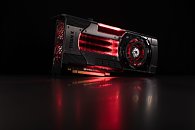

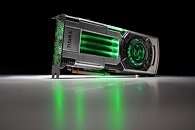

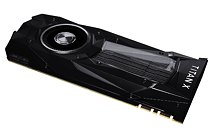
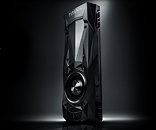
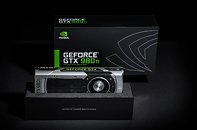

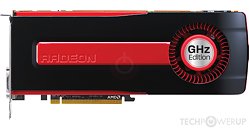
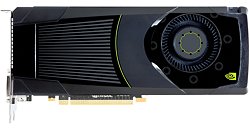
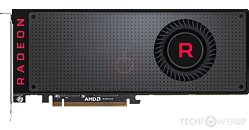
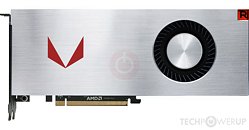


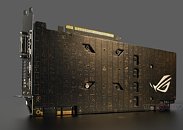
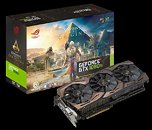
17 Comments on Which Future Starts with NVIDIA's Titan "Star Wars" Collector's Edition ?
The old days they just put stickers on the reference design and call it a day. Users can do that and theme them to their hearts desire.
also the option of individual coolers, better than a big ass overpriced video card,
Regards,